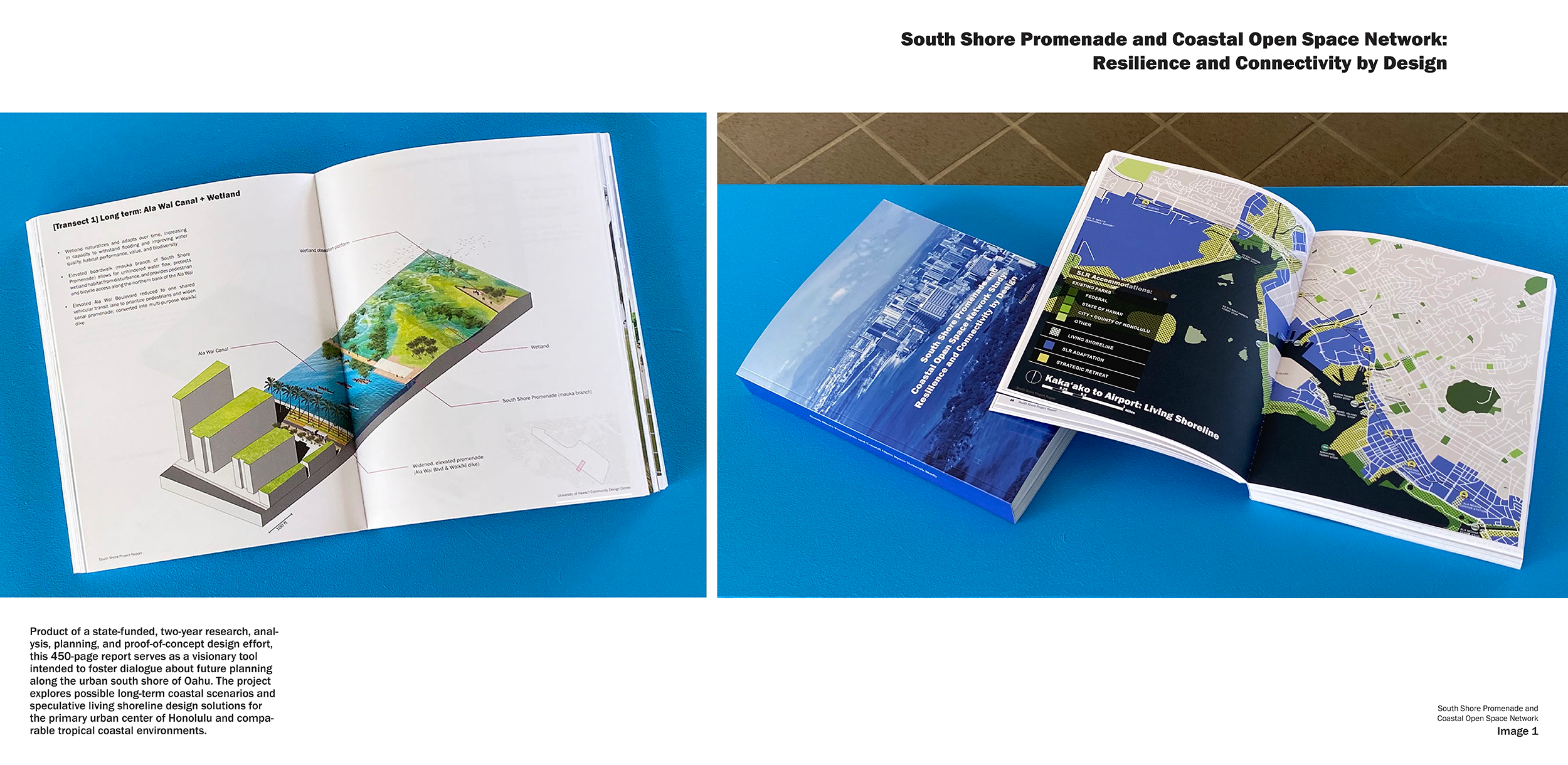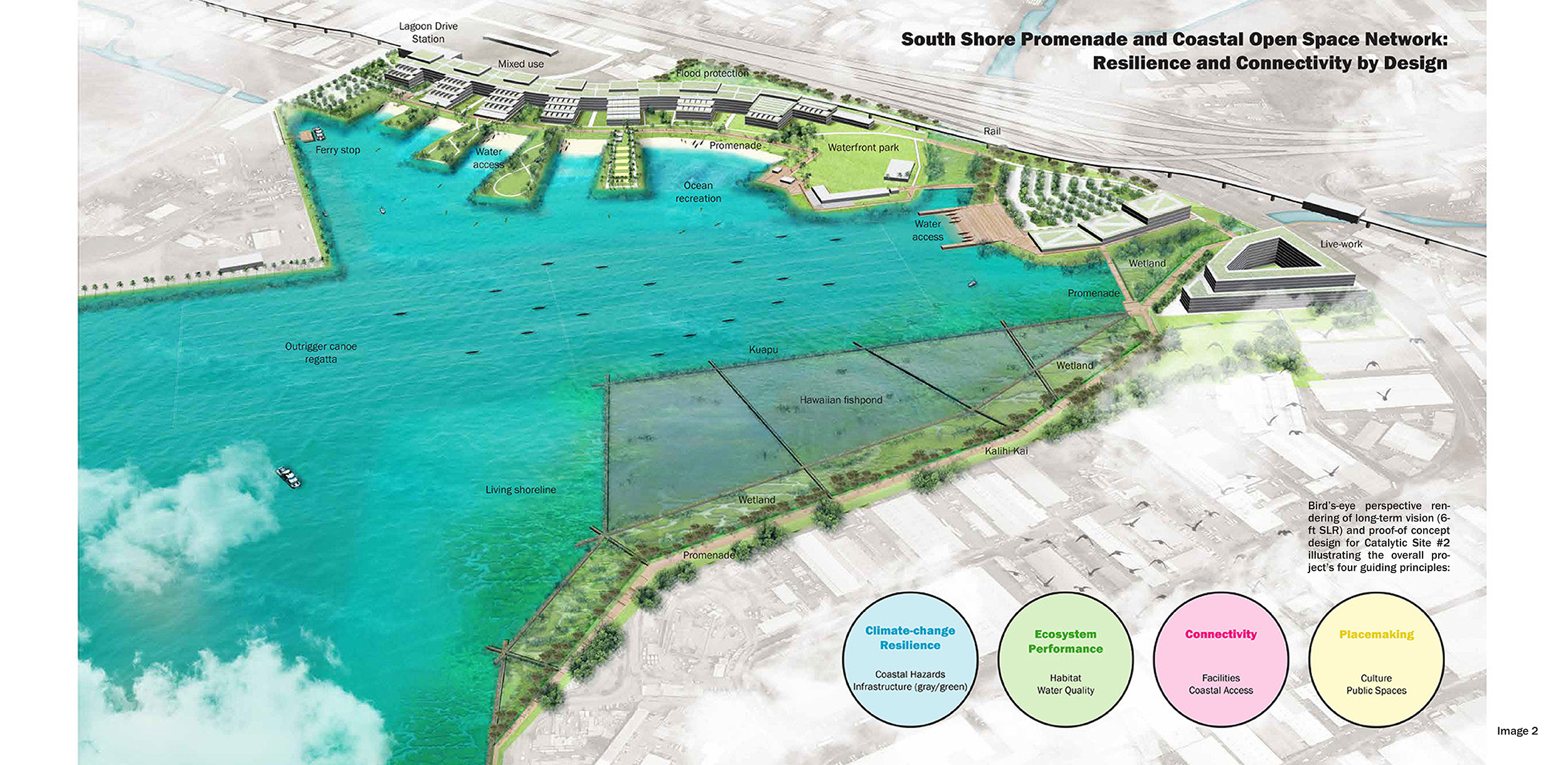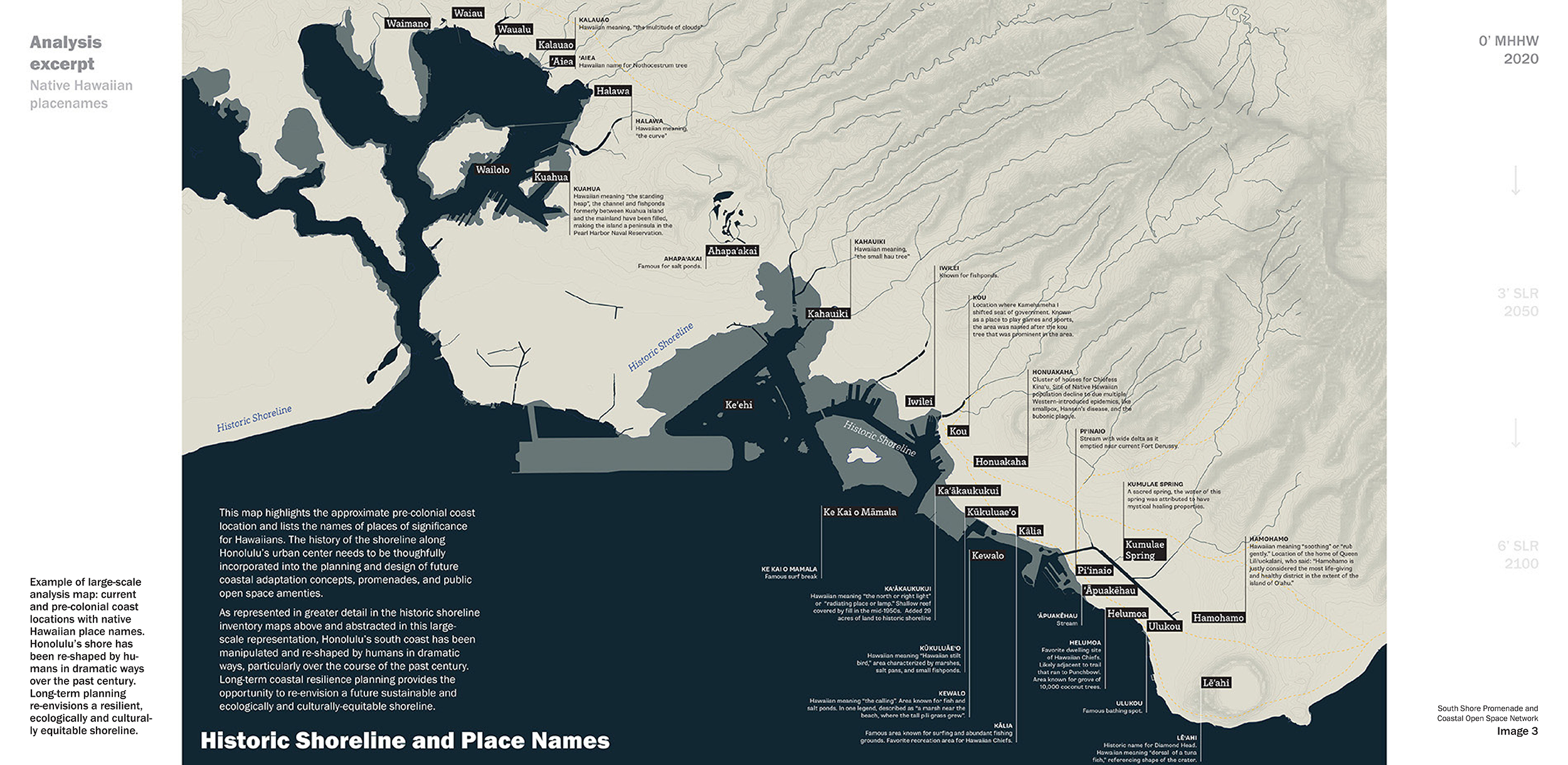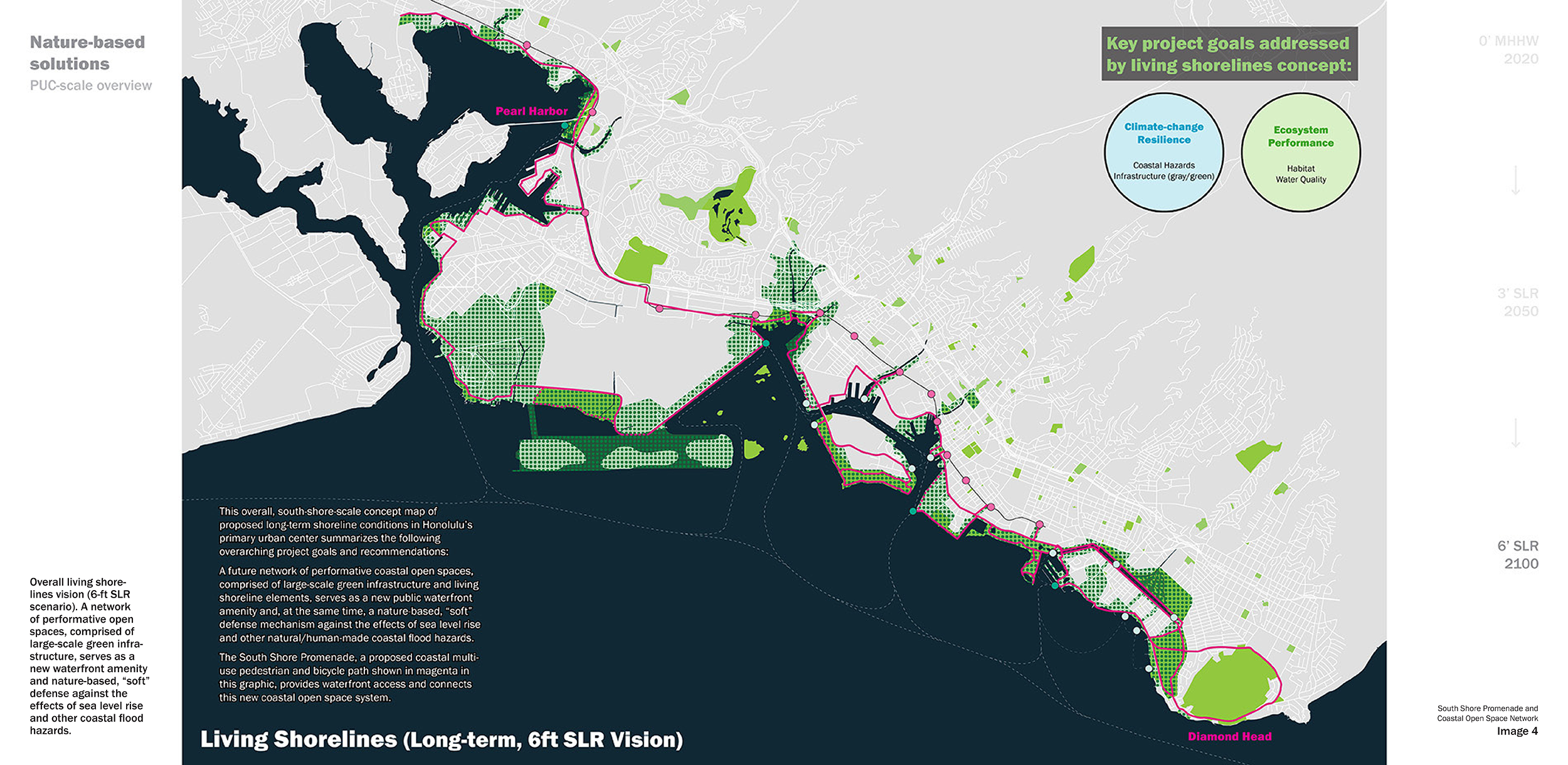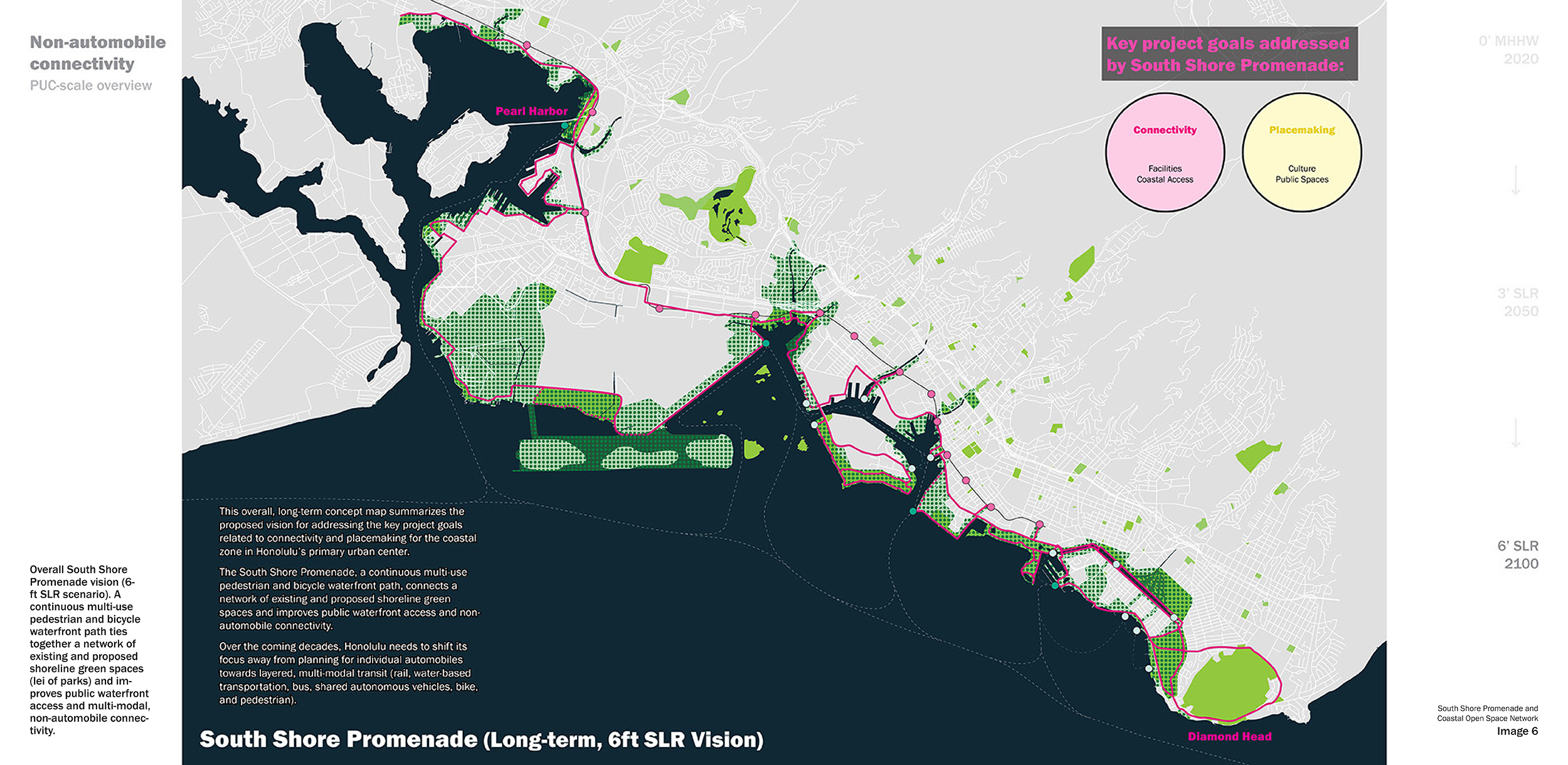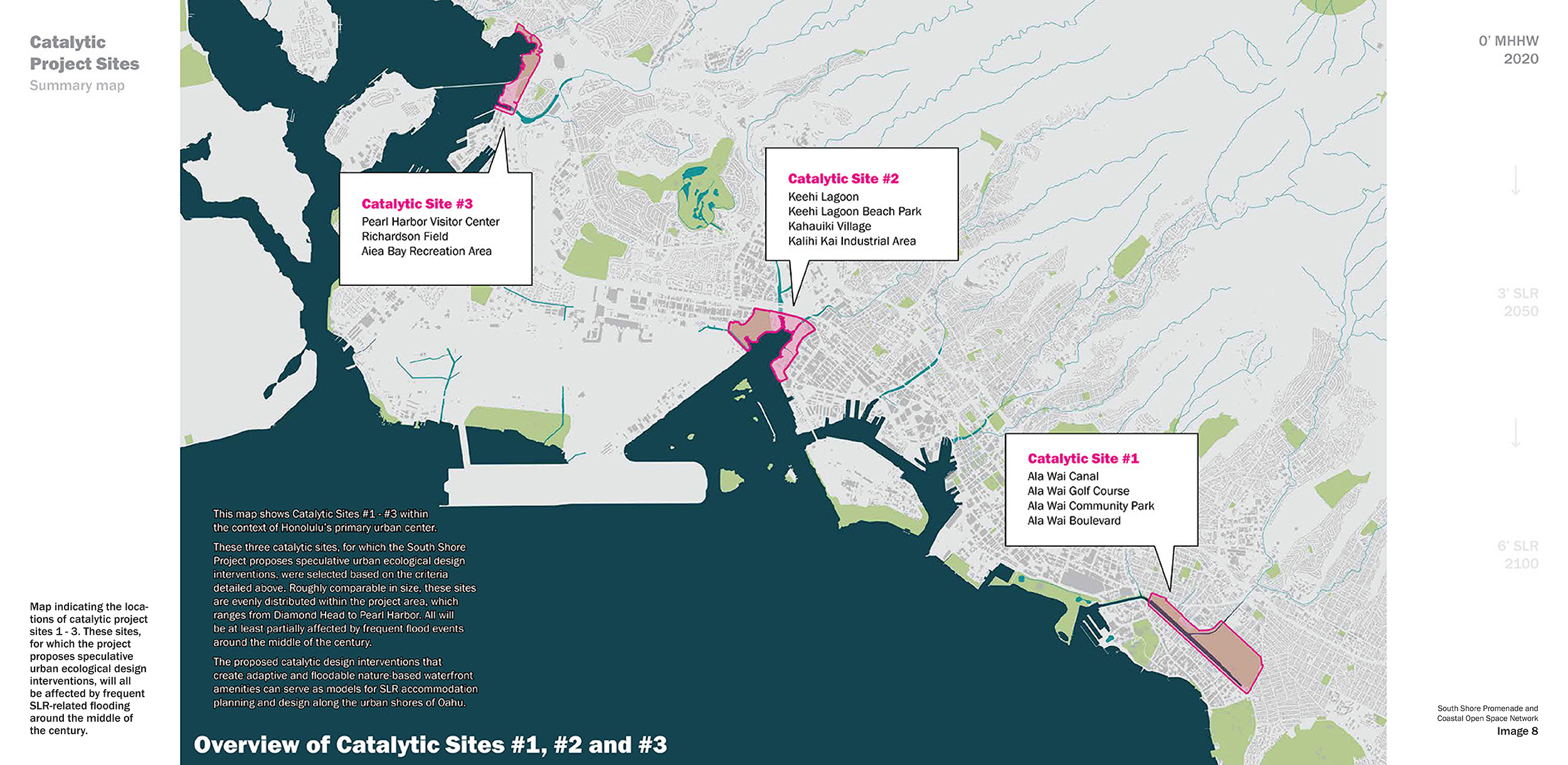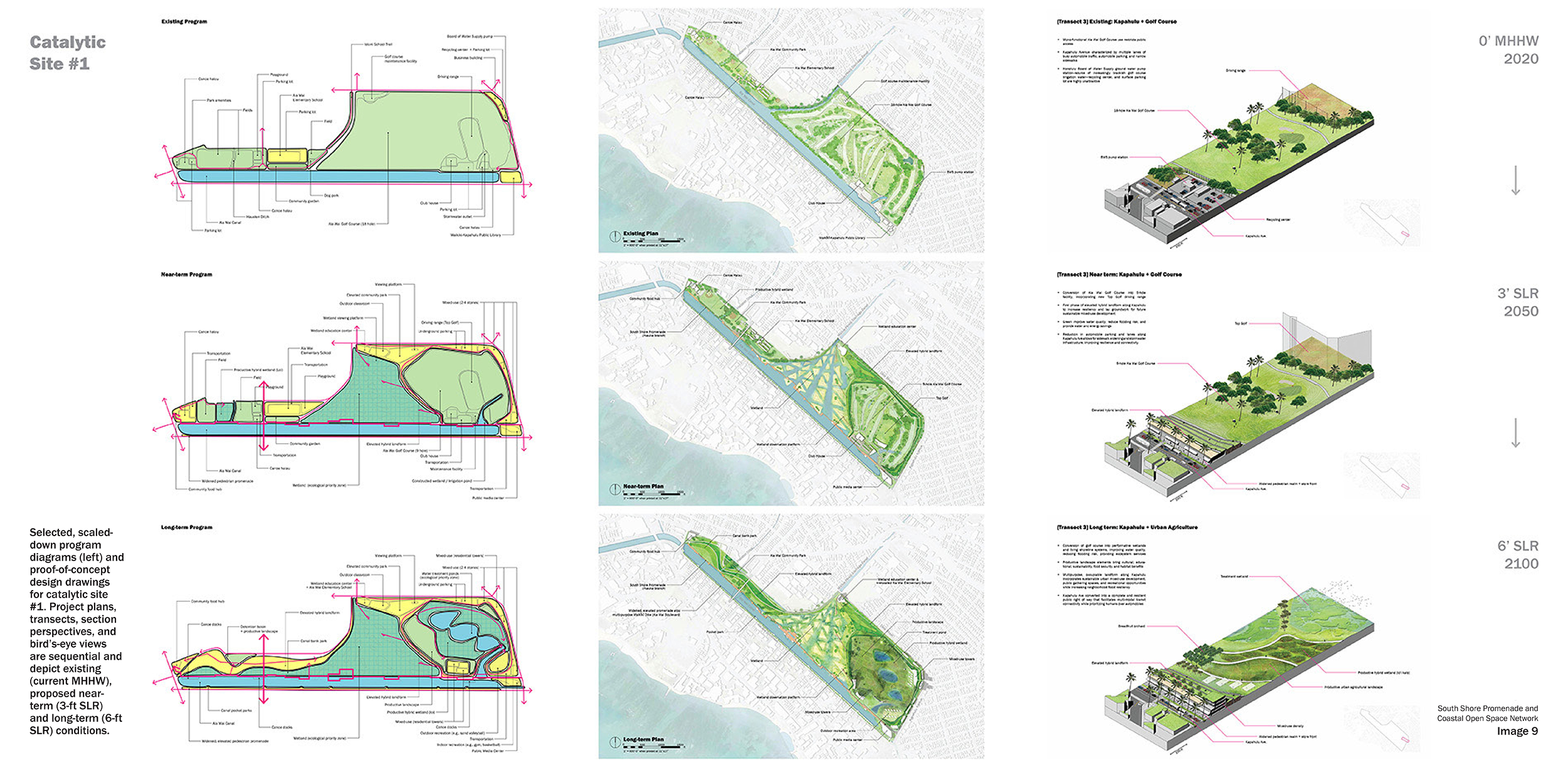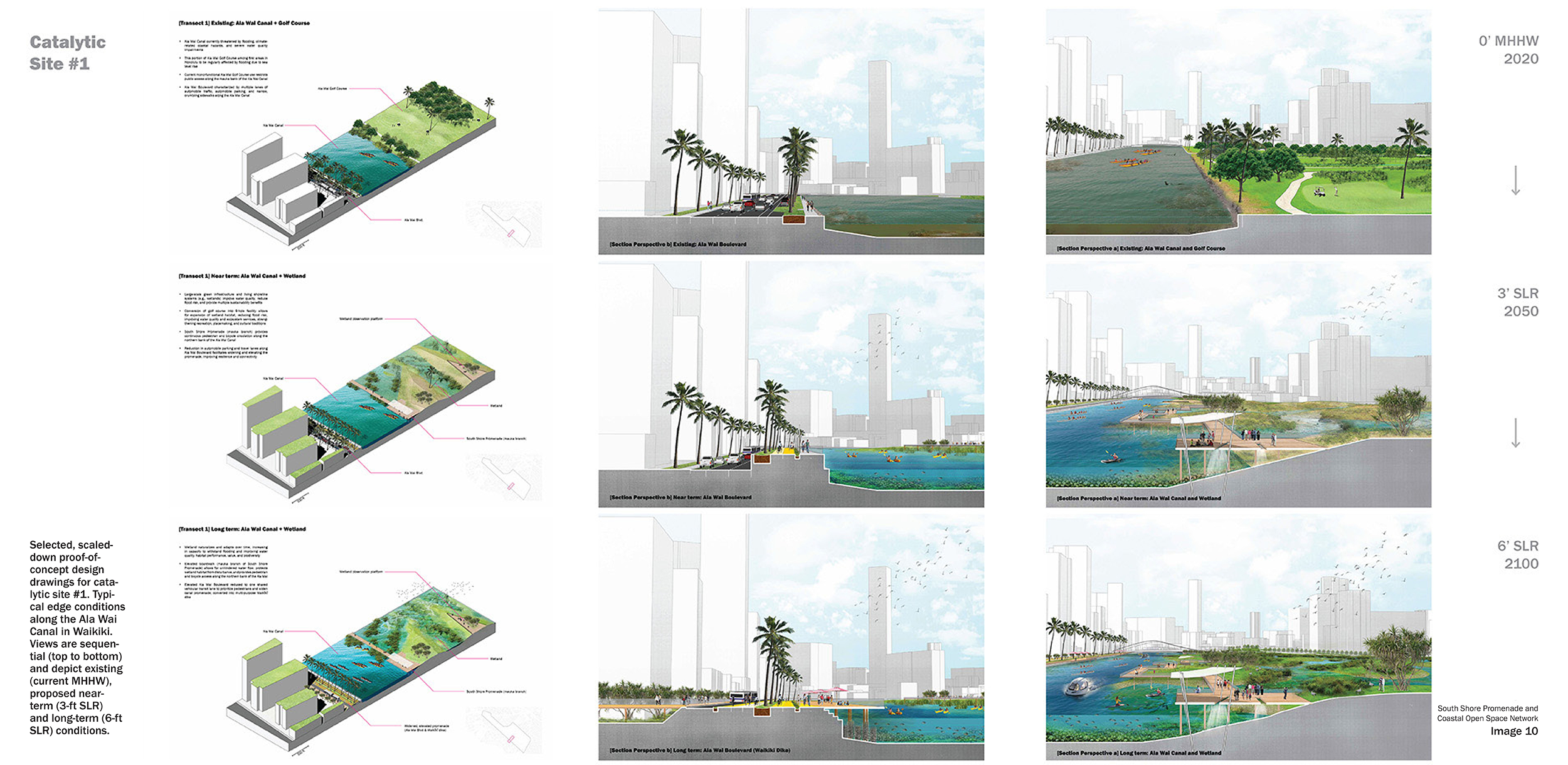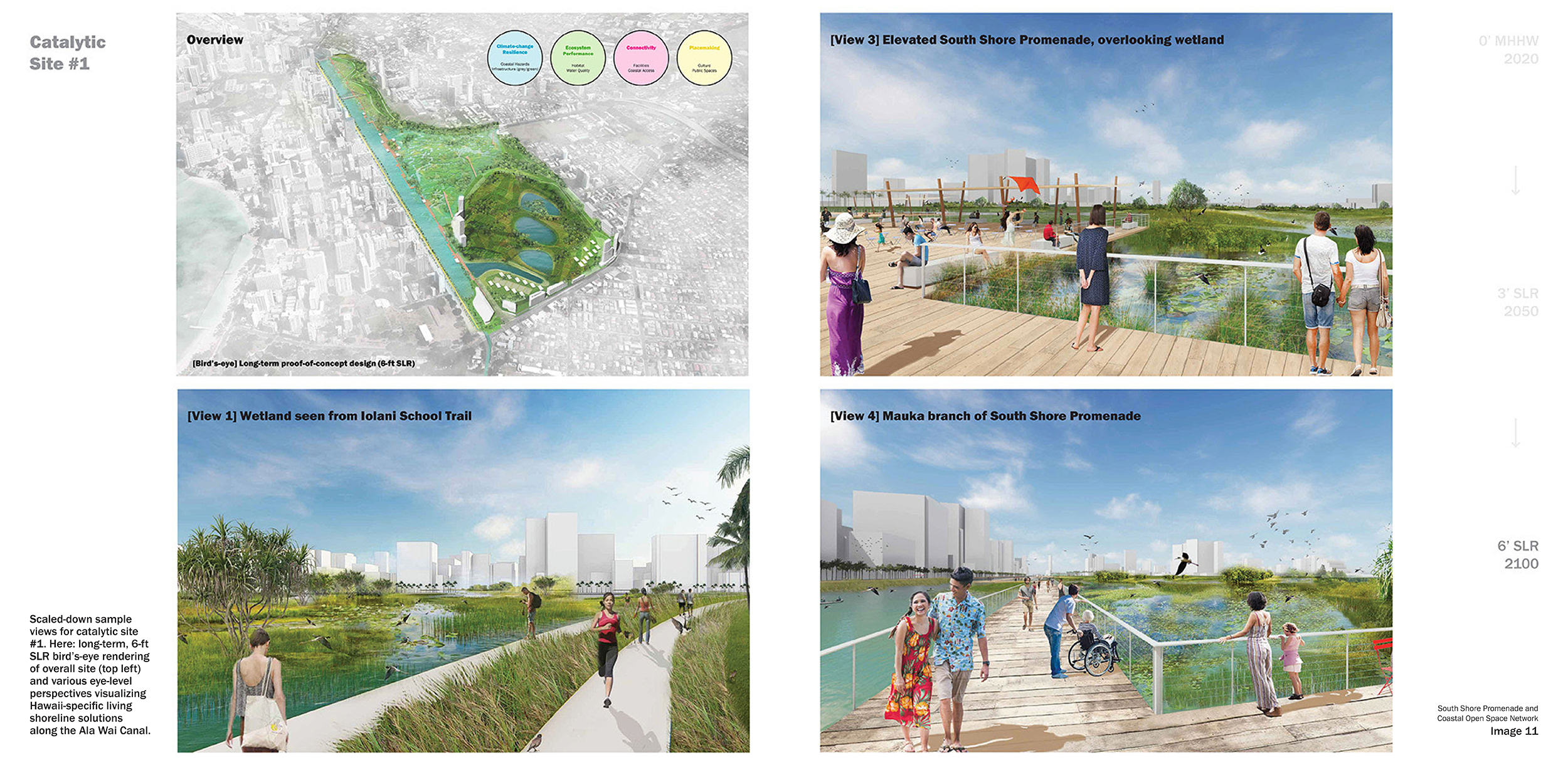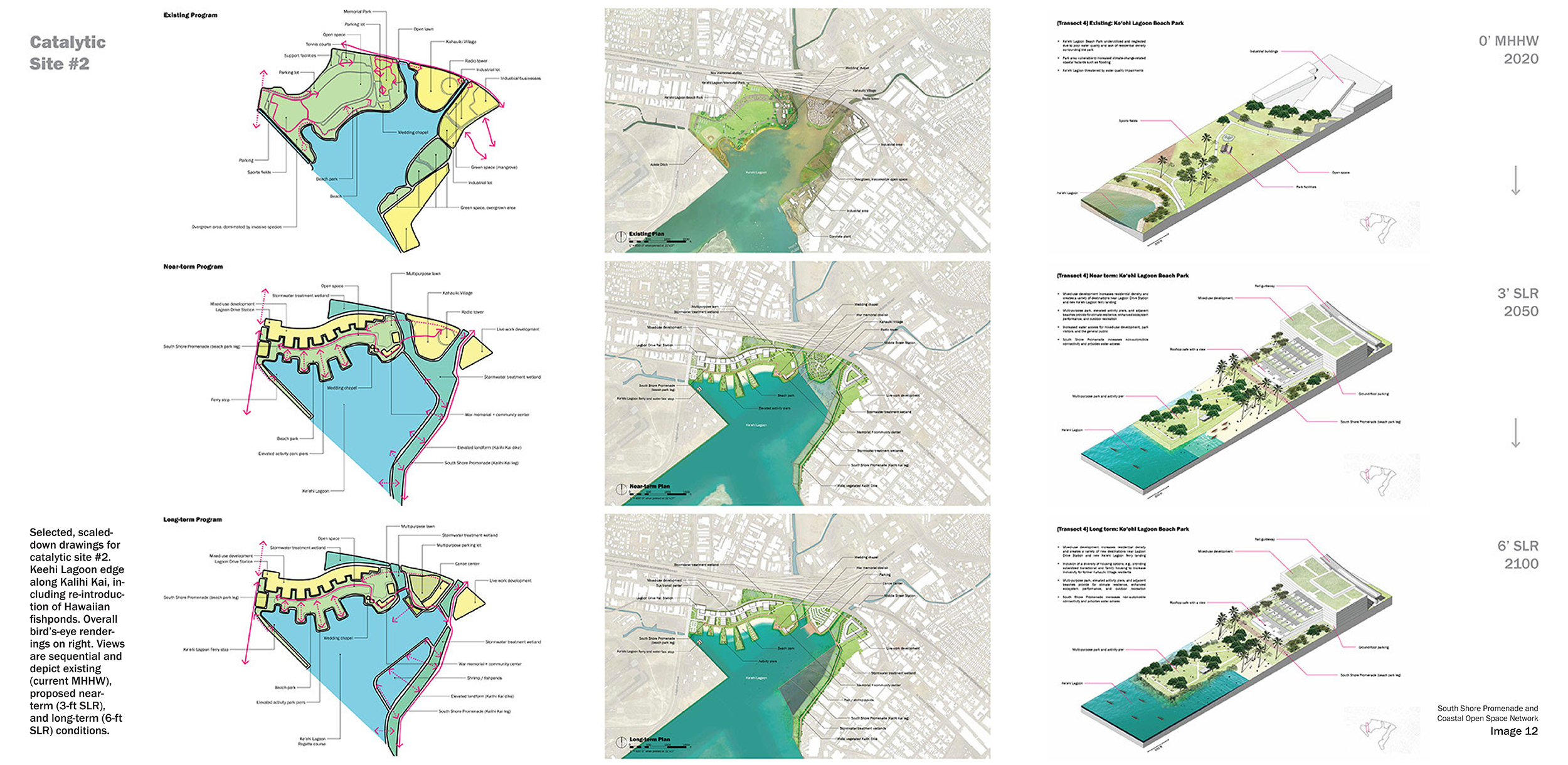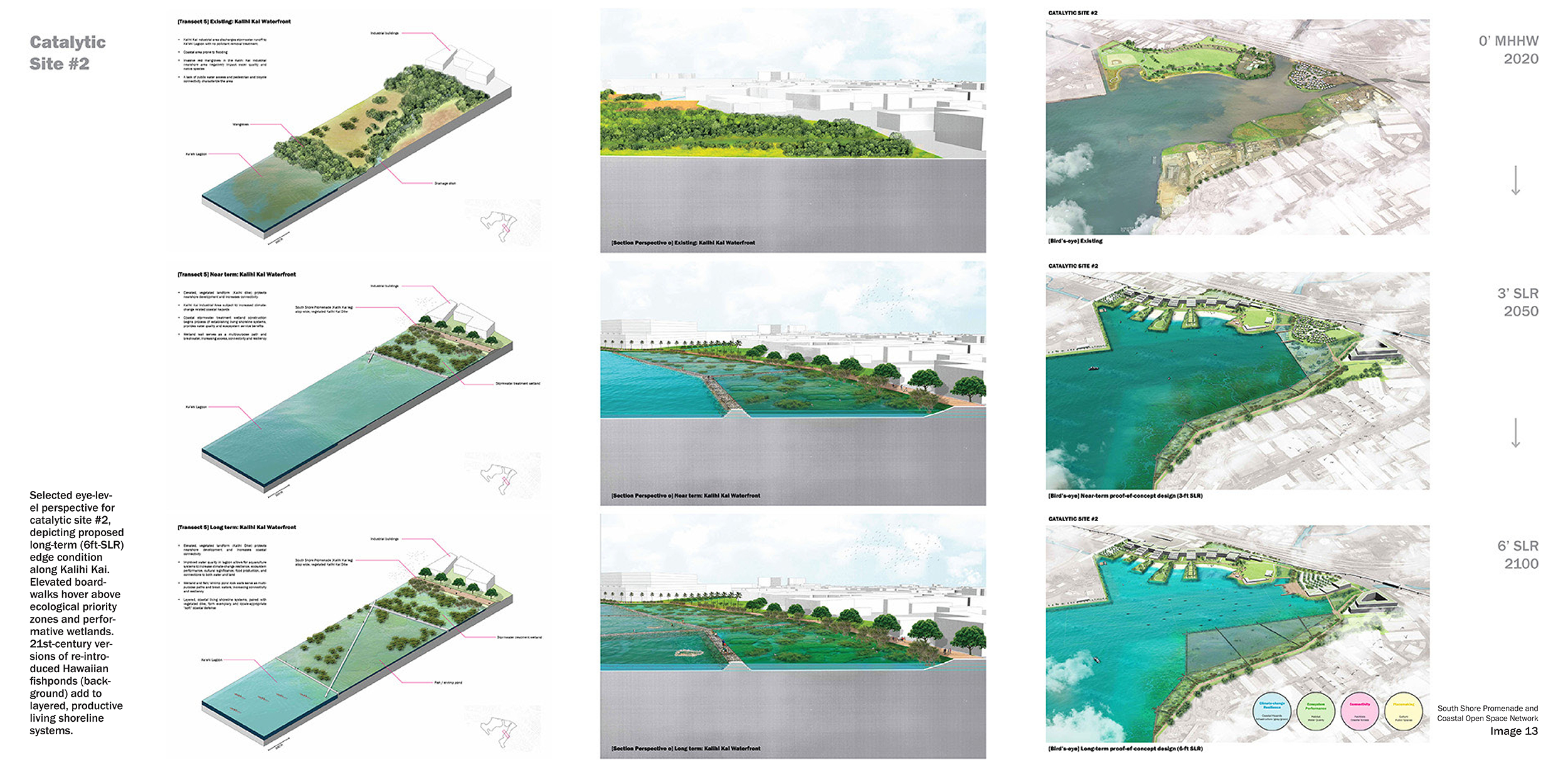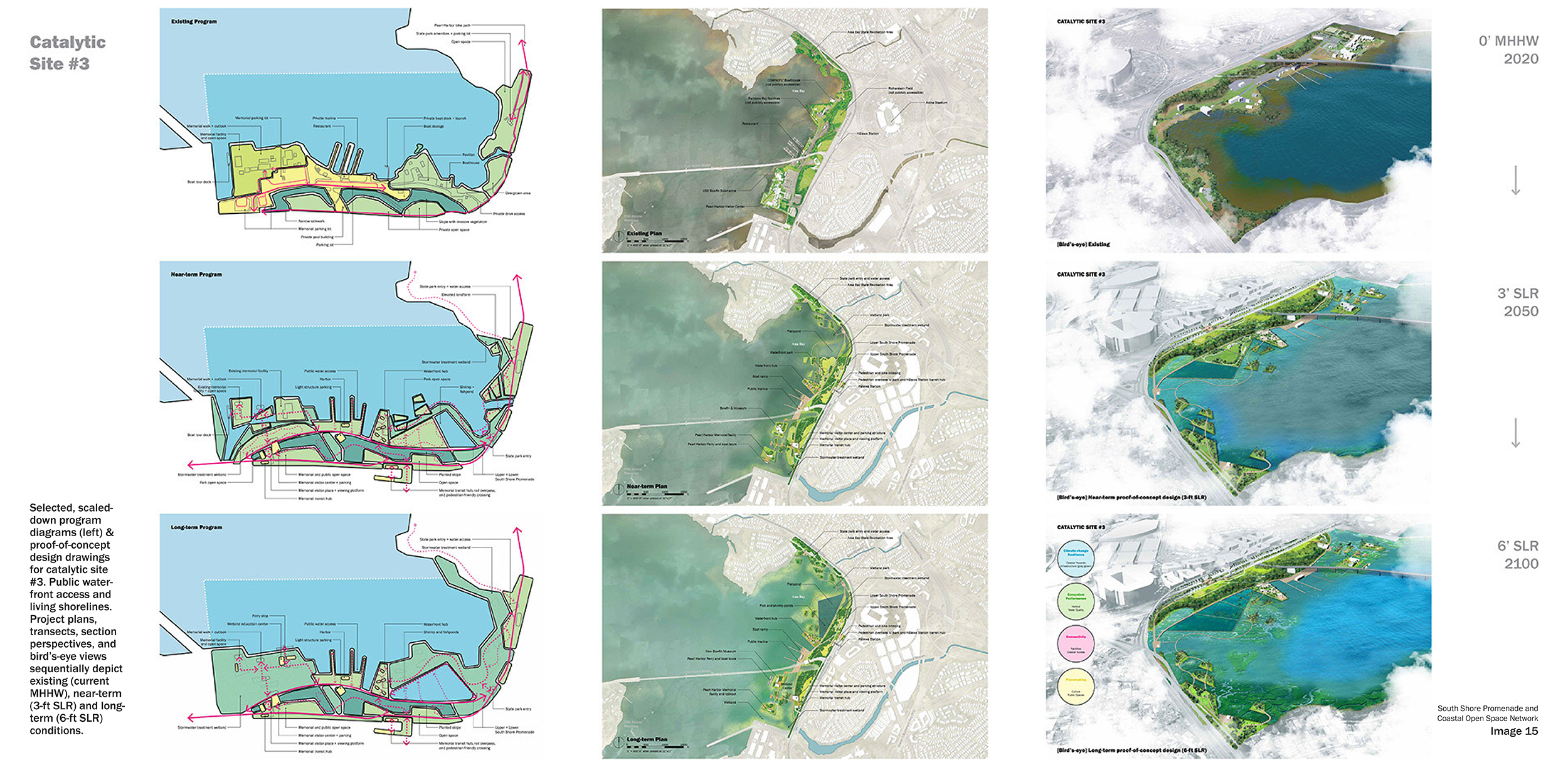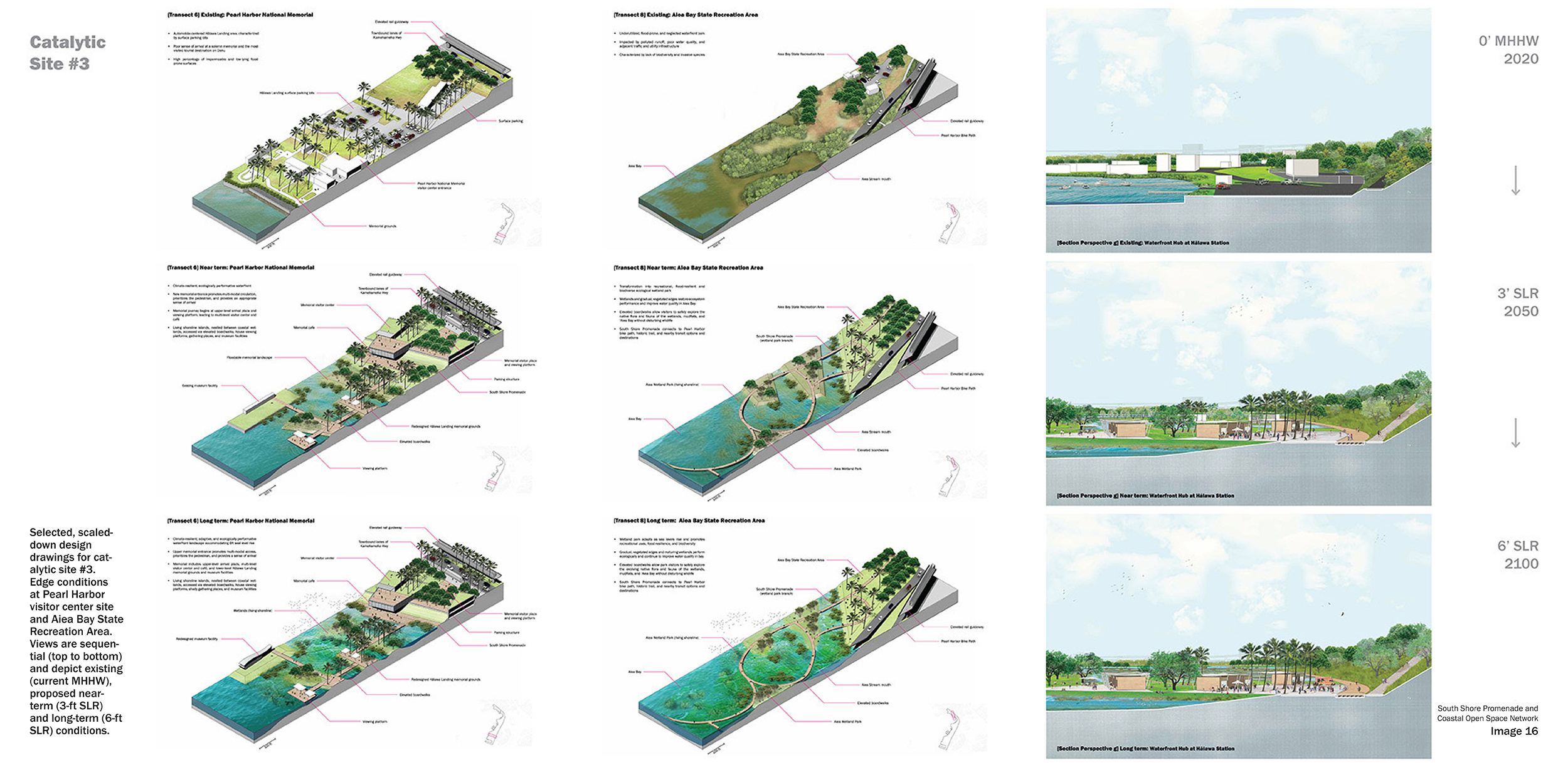South Shore Promenade and Open Space Network Study: Resilience and Connectivity by Design
Result of a two-year, state-funded research, analysis, and proof-of-concept design project, this 450-page report serves as a visionary educational tool aimed at fostering dialogue about future planning along the south shore of the primary urban center of Honolulu. Visualizing possible long-term level rise adaptation scenarios and speculative, nature-based living shoreline design solutions, the project intends to further the contemporary discourse on climate-resilient urban waterfront development in tropical settings.
By investigating past, present, and planned shoreline conditions in urban Honolulu, this study advocates for the anticipation of climate-crisis challenges through innovative planning and urban ecological design that embraces dynamic conditions, such as coastal flooding, rather than preventing them—all while taking inspiration from traditional native Hawaiian biocultural land-water practices. The project’s four guiding principles, which carry throughout the multi-scalar planning and urban design proposals, include: climate-change resilience, ecosystem performance, connectivity, and placemaking.
Large-scale planning concepts and urban-scale proof-of-concept designs for three catalytic project sites propose people-centric, connected, and dynamic waterfront conditions that decrease coastal vulnerabilities by responding to shoreline changes and issues related to Honolulu’s aging infrastructure. The study envisions multi-purpose coastal green infrastructure systems, linked public open spaces, waterfront promenades, and networks of ecological priority zones as essential drivers of urban form.
The speculative site designs exemplify Honolulu-specific living shoreline systems as “soft” defense mechanisms against sea level rise, allowing for indeterminacy, increased biodiversity, improved ecosystem services, and, at the same time, education, cultural restoration, and accessible urban waterfront amenities.
Client: State of Hawaiʻi Office of Planning
Principal Investigator: Judith Stilgenbauer ASLA
Project Staff: Hayley McCann, Diane Moore, Ariel Dungca ASLA
Student Project Assistants: Calvin Bulan, Matthew Higa, Gabrielle Lapinig, Jay Moorman, Jonathan Quach, Valerie Ribao
Course integration: ARCH 743 Spring 2018, Spring 2020
Timeframe: May 2018 – December 2020
Selected Awards & Recognition:
2021 Award of Excellence (Analysis & Planning Category), Hawai‘i Chapter of the American Society of Landscape Architects, triennial professional awards
2021 Urban Design Award, Hawai‘i Chapter of the American Planning Association, professional awards
Schuler, Timothy A., “Resilience, Rendered”, in Landscape Architecture Magazine, October 2021, access the article here.
“UH Study Reshapes Honolulu’s Urban Core to Embrace Sea Level Rise” in Noelo: Research and Innovation at the University of Hawaii magazine, 2021 Issue
Honolulu Star Advertiser above-fold front page coverage, “Honolulu most vulnerable to sea level rise: A University of Hawaii study offers ways the city can adapt to the rising of ocean waters”, April 8, 2021
U.S. News, “Hawaii Study Offers Design Changes to Fight Climate Change”, April 5, 2021
Hawaii Public Radio, “Climate Change Solutions for Oahu's South Shore”, April 5, 2021
Hawaii News Now, “To combat rising sea levels, UH professors propose plans to redesign Hawaii’s infrastructure”, April 4, 2021
University of Hawaii News press release, “UH project plans for sea-level rise from Diamond Head to Pearl Harbor”, March 30, 2021
Re-imagining the Ala Wai Marsh featured in Honolulu Star Advertiser
